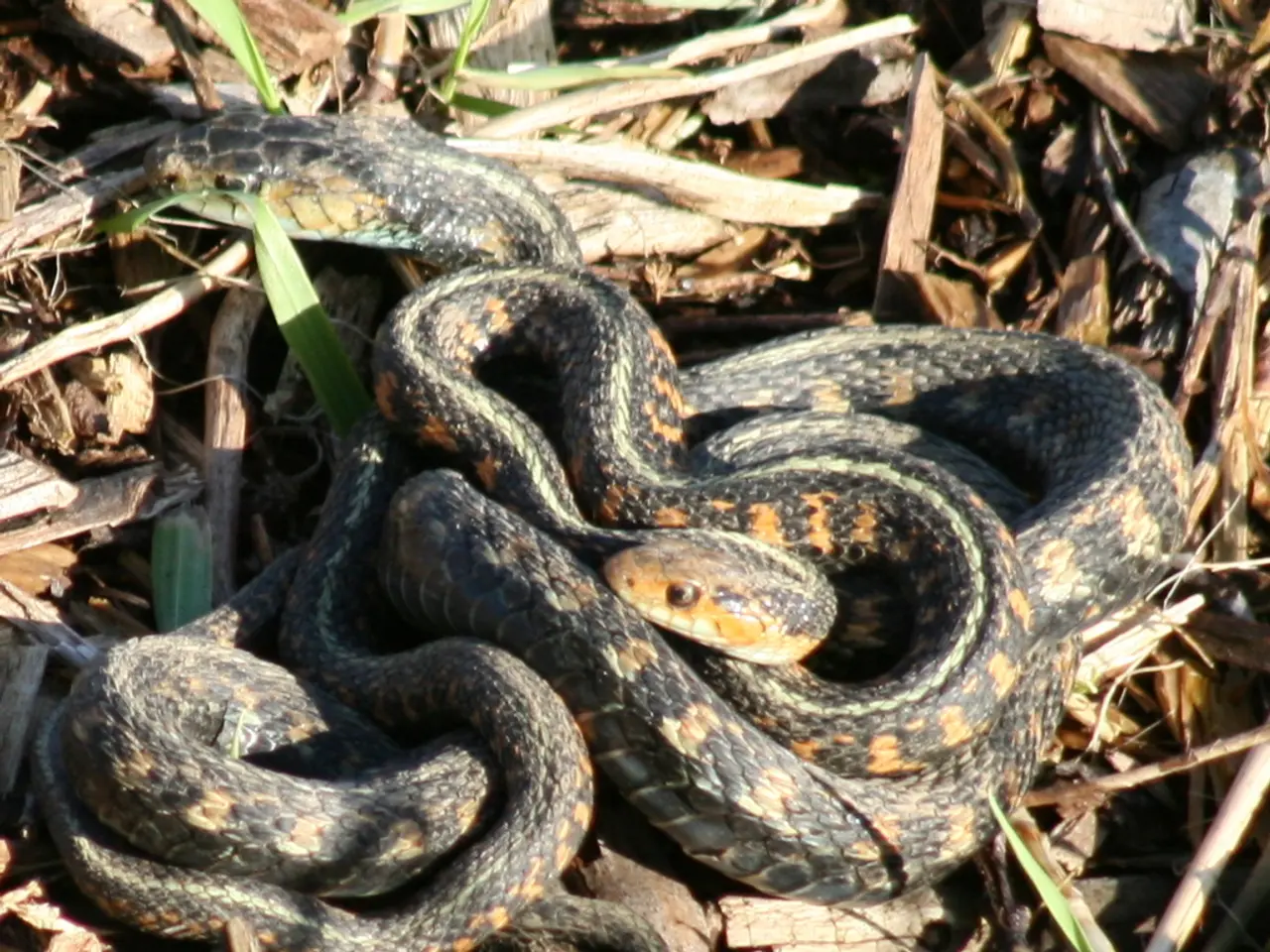Robotic rabbits deployed to combat invasive pythons in the Everglades by scientists
In the Everglades of South Florida, a new weapon is being deployed in the ongoing battle against invasive Burmese pythons. These robotic rabbits, or robo-rabbits, have proven effective in attracting and capturing the snakes, providing wildlife officials with a scalable, humane, and innovative tool to manage the invasive species.
Over a 90-day testing period, nine robotic rabbit pens attracted 22 pythons, with the snakes remaining in the area for over an hour on average. This facilitates capture or euthanasia, boosting overall efforts to control this invasive species.
The project, led by the University of Florida and funded by the South Florida Water Management District and Florida Fish and Wildlife Conservation Commission, aims to capture the processes that an actual rabbit would give off to attract Burmese pythons. The robo-rabbits are solar-powered devices designed to mimic the behavior, body temperature, and soon even scent of live marsh rabbits, a favorite prey of Burmese pythons.
The toy rabbit used in the study shimmers with body heat, shakes like something alive, and even smells like a real rabbit. If the snakes don't take the bait, the researchers are prepared to perfume the robots with actual rabbit scent in the next phase of testing.
The robo-bunnies have been deployed in rabbit pens across South Florida, but their exact locations have not been disclosed. This technology is one of several creative strategies for controlling Burmese pythons in Florida, including the use of "scout snakes" with GPS trackers, near-infrared cameras, and environmental DNA sampling.
The Burmese pythons arrived in Florida through the exotic pet trade, with sightings dating back to the 1970s. Despite Florida's aggressive measures, including a 10-day public python hunt called the Python Challenge, the snakes remain stubbornly difficult to find.
Between 2003 and 2011, mammal populations in snake-infested areas plummeted. Raccoons dropped by 99 percent, bobcats by 88 percent, and marsh rabbits, a key food source for native predators and pythons, vanished entirely. The goal is to mitigate the python population enough to allow native species to recover.
The project's lead scientist, Robert McCleery, a wildlife ecologist from the University of Florida, expects to have results by November. Mike Kirkland, a senior invasive animal biologist at the South Florida Water Management District, states that twenty years ago, the Everglades would have been teeming with wildlife, but now it's challenging to find a single deer, possum, or squirrel. The robo-bunnies continue to twitch, playing their role in an ecological arms race between humans and Burmese pythons.
The Florida Python Challenge is another strategy, where participants compete to remove as many snakes as possible, with the winner receiving $10,000 for catching 20 snakes. The robo-rabbits mark an improvement over previous methods by saving time spent searching the swamp and enabling more targeted python removal.
In a statement, Andrew Durso, a herpetologist, stated that taking out one female python prevents all of her current and future reproduction, which could be thousands of eggs that will never be laid. The use of robo-rabbits could be a promising addition to ongoing invasive species management programs in South Florida wetlands.
- The robo-rabbits, being solar-powered devices that mimic the behavior and body temperature of live marsh rabbits, could soon imitate their scent as well, further enhancing their effectiveness.
- The data accumulated from these robotic rabbits could potentially aid environmental-science researchers in understanding the ecology of Burmese pythons better.
- As technology advances, it's conceivable that robo-rabbits might be adapted for use in other regions facing similar invasive species issues.
- Interested parties in the health-and-wellness and fitness-and-exercise industries could explore the technology behind the shake and body heat of the robo-rabbits for potential applications in gadgets designed for exercise motivation.
- With the positive impact of robo-rabbits in controlling Burmese pythons, it's essential to consider harnessing tech (like robotics) in other areas of environmental-science for the betterment of our climate-change goals.
- Robotics, tech, and science continue to intertwine and impact various aspects of our lives, from wildlife management to health-and-wellness, providing innovative solutions to complex challenges.
- Just as the robo-rabbits are playing a critical role in the future of Florida's Everglades, the integration of futuristic sciences like robotics and technology could significantly reshape the landscape of environmental-science.
- As we move forward in our quest to conserve ecosystems and safeguard biodiversity, the robo-rabbits represent a beacon of hope, demonstrating the potential for science to overcome invasive species like Burmese pythons and restore threatened habitats.




